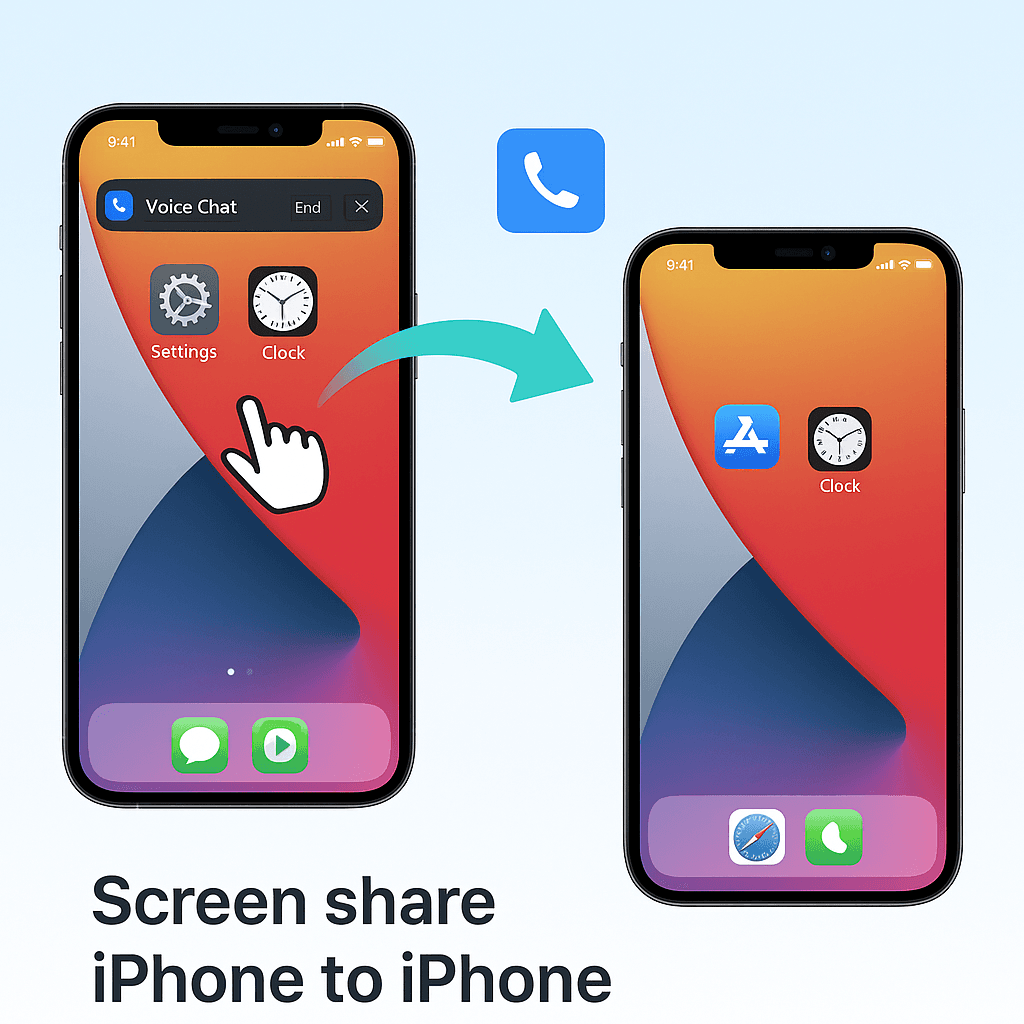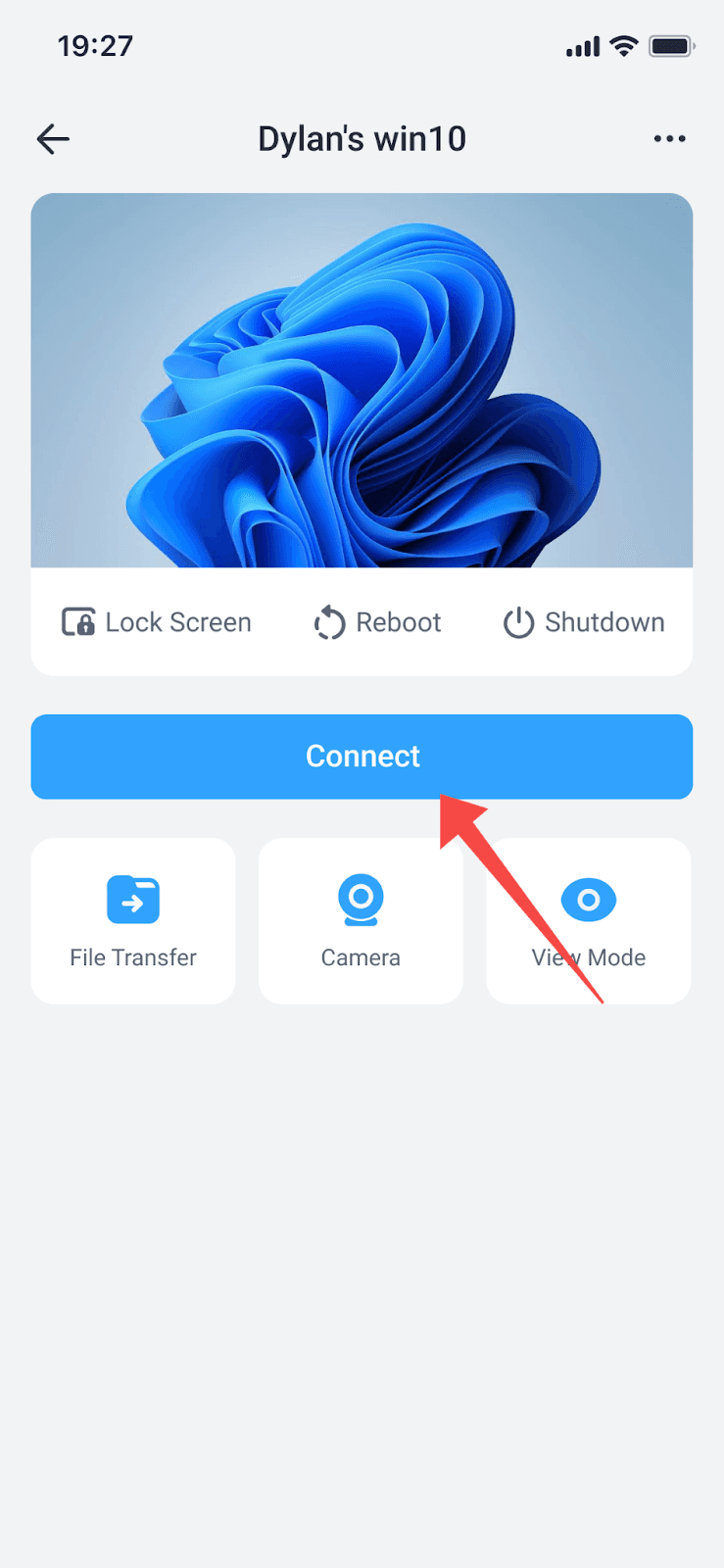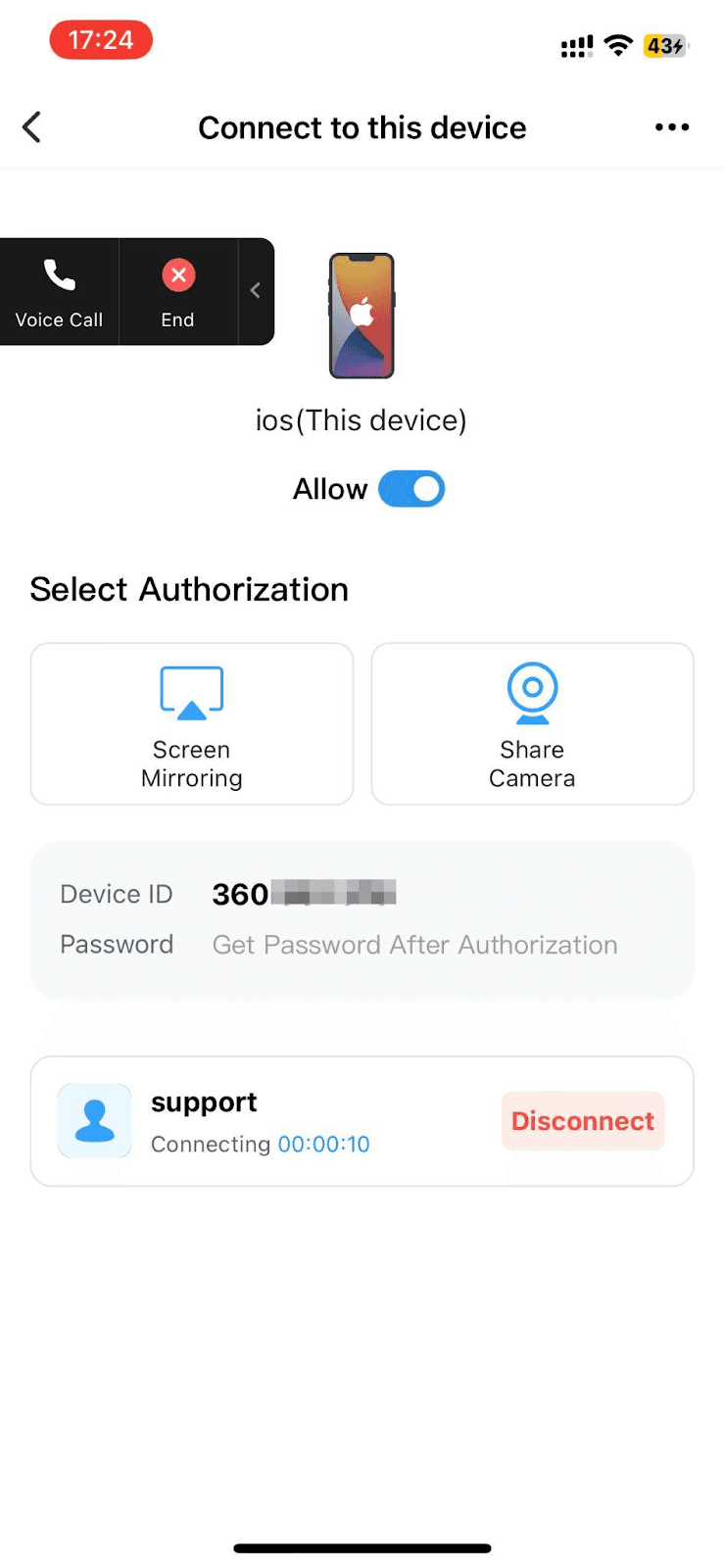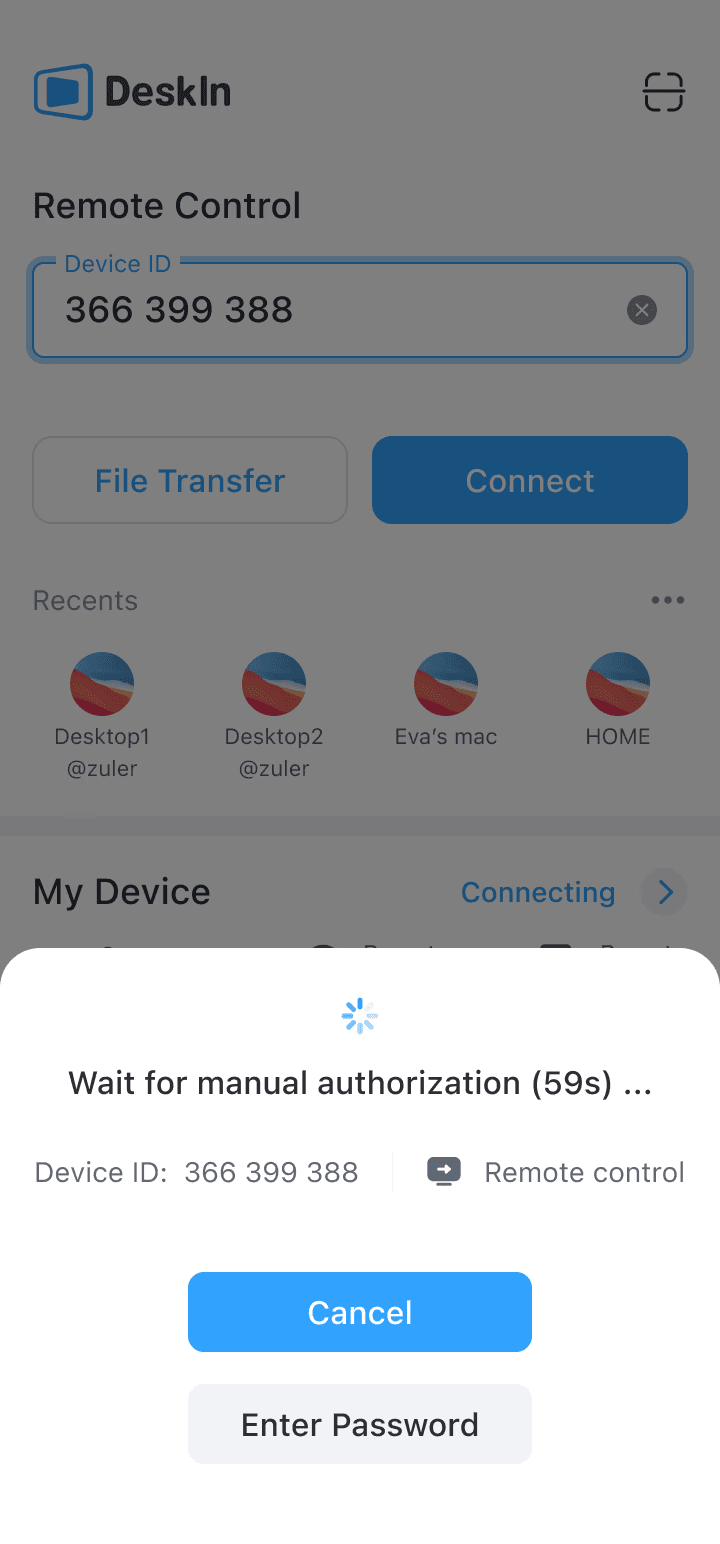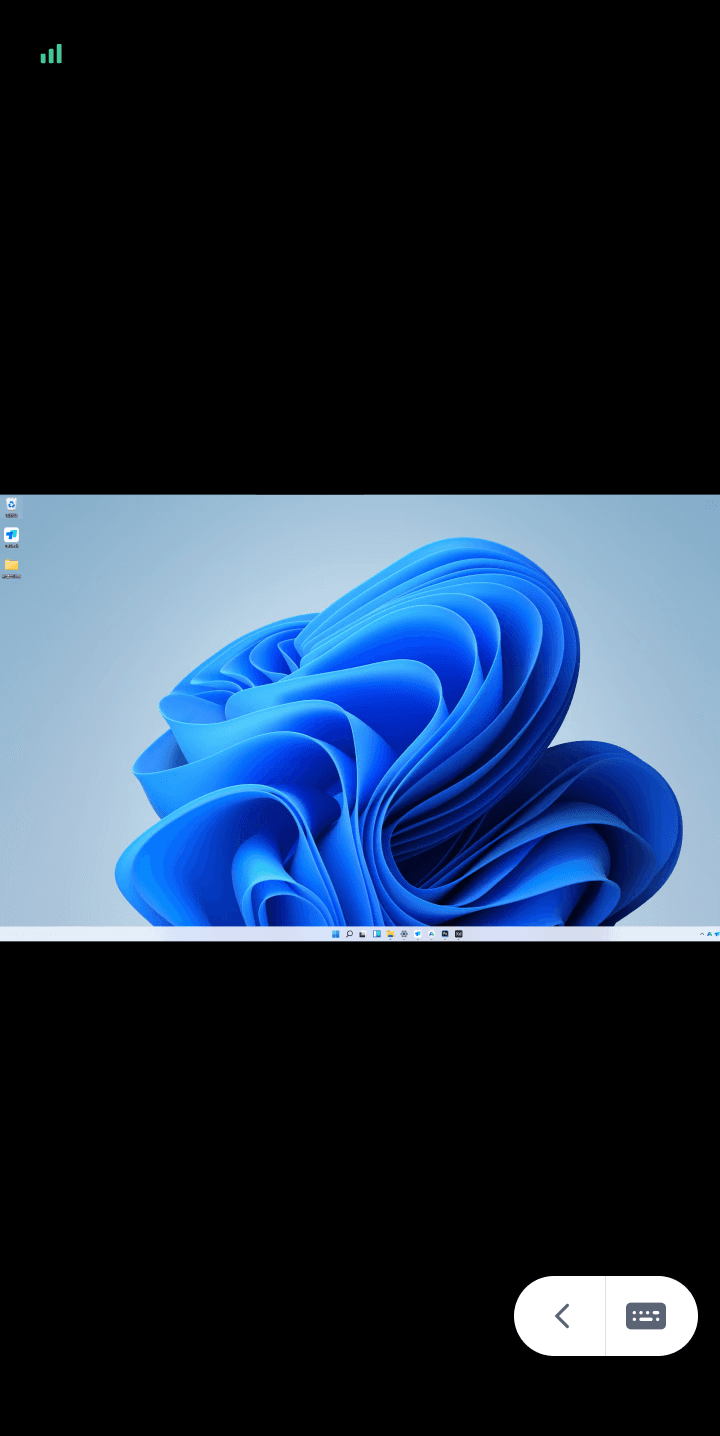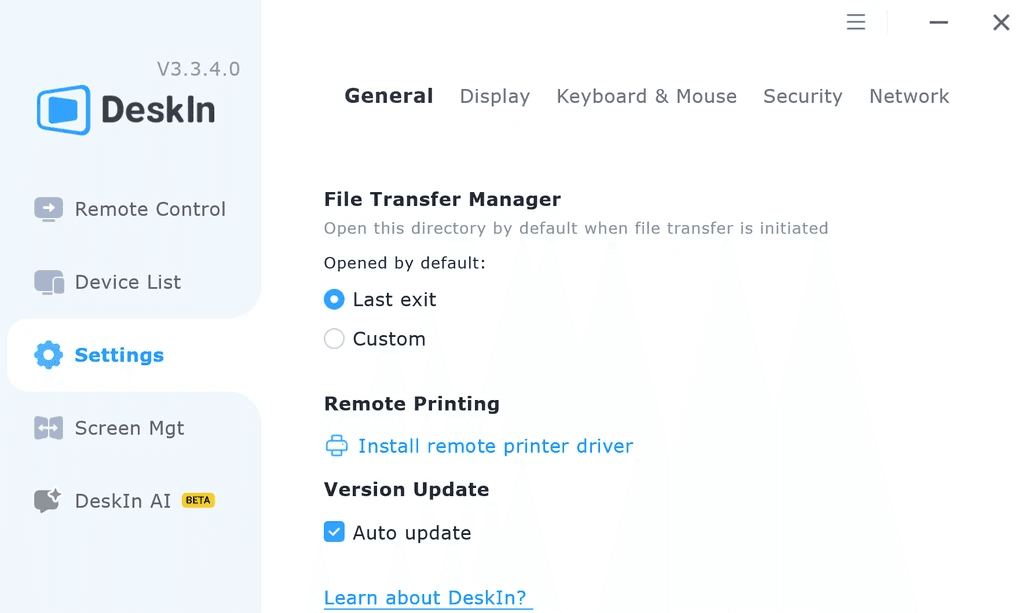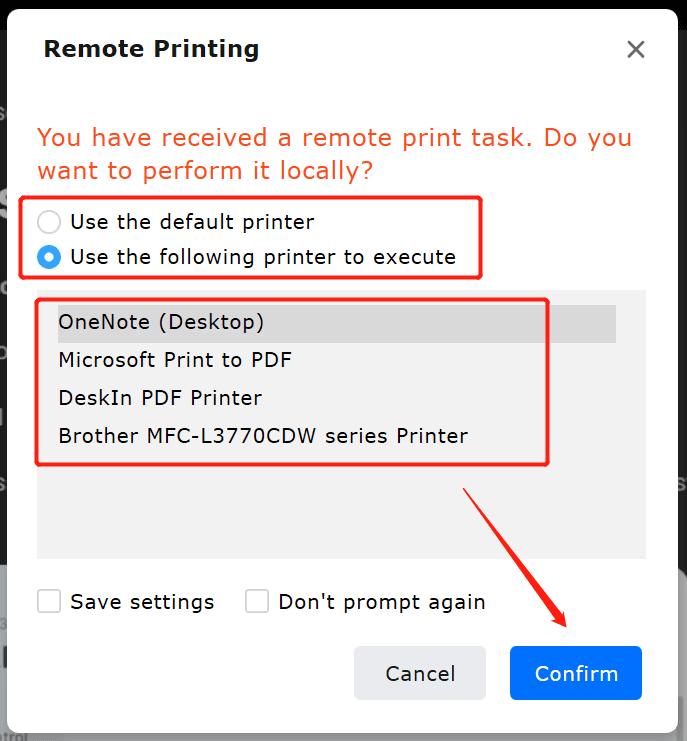現在,不論是遠距工作、協助朋友解決電腦問題,或是出門在外時需要存取桌上型電腦,你可能都會需要遠端連線到另一台電腦,在家中電腦、辦公室工作站,甚至是家人裝置之間切換。隨著近年來遠距辦公與混合式工作模式的普及,遠端存取已成為數位生活的常態。不過,如果你曾嘗試過設定遠端桌面連線,就會知道這並不總是那麼簡單。根據業界調查,超過七成的遠距工作者認為,穩定可靠的遠端連線工具是維持高效的關鍵。面對需要緊急存取檔案、進行跨裝置登入或提供遠端支援的情境,選擇合適的工具,是打破地理限制、隨時隨地掌控你數位資產的基礎。
為了幫助你輕鬆應對各種遠端需求,本指南將介紹三種主流的電腦遠端連線解決方案。這些方案涵蓋了從作業系統內建的免費功能(如 Windows RDP 或 Chrome 遠端桌面),到市場上提供進階功能與高安全標準的專業級遠端控制軟體 DeskIn。透過瞭解這些遠端桌面工具的特性與應用場景,你可以根據個人需求、安全性考量與預算,找到最適合你的電腦遠端解決方案,從而提升工作與協作的彈性與效率。
方法一:使用 Windows 遠端桌面連線(Remote Desktop Connection)
Windows 遠端桌面連線(RDC)是微軟作業系統內建的遠端控制工具,無需額外安裝軟體即可使用。這項功能特別適合在企業內部網路環境中使用,讓 IT 人員或員工能夠遠端登入其他 Windows 裝置進行管理或操作。
遠端桌面連線允許你透過區域網路(LAN)或廣域網路(WAN),從一台 Windows 裝置完整控制另一台 Windows 裝置。 一旦遠端連線成功,你就能完全掌控遠端電腦,存取檔案、執行應用程式、甚至進行系統管理工作,操作體驗與實際坐在電腦前幾乎無異。這使其成為遠距工作者、IT 技術支援人員,或需要在同一網路中控制多台設備的專業人士的理想選擇。
📌 Windows 遠端桌面連線的優勢與限制
優點:
完全免費,Windows 系統原生支援
操作體驗流暢,特別適合同網域環境
支援多螢幕顯示
缺點:
僅支援 Windows 專業版(Pro)、企業版(Enterprise)或教育版(Education),家用版無法作為主機
主機端電腦必須保持開機且連上網路
若需從外部網路連入,可能需設定 VPN 或進行路由器埠轉發
對技術新手來說,初次設定流程較為複雜、耗時
如何使用 Windows 遠端桌面連線?詳細步驟教學
開始操作前,請確認主機電腦為 Windows 專業版或更高版本,並已連接網路。
第一步:啟用遠端桌面功能
在你要作為主機的電腦上,按下 Win + I 快速鍵開啟設定,前往「設定 > 系統 > 遠端桌面」,將「遠端桌面」開關切換為「開啟」,並務必記下該電腦的名稱(PC 名稱)。

第二步:新增遠端存取使用者
點選「選擇使用者…(Select users…)」,如果需要讓非系統管理員帳戶也能遠端存取,請在此新增他們的使用者帳號。
第三步:設定防火牆規則
為確保連線順暢,請確認在「Windows 防火牆(Windows Defender Firewall)」的「允許的應用程式」清單中,已勾選允許「遠端桌面」通過防火牆。
第四步:取得 IP 位址
按下 Win + R,輸入 cmd 開啟「命令提示字元(Command Prompt)」,輸入 ipconfig,然後找到並複製顯示的「IPv4 位址」(通常格式為 192.168.x.x)。
第五步:建立遠端連線
在控制端電腦上,開啟「遠端桌面應用程式」(按下 Win + R 輸入 mstsc),在彈出視窗中輸入「電腦名稱(PC name)」或「IP 位址」,點擊連線後輸入主機的帳號與密碼,等待數秒後即可完成遠端桌面連線。

方法二:透過 Chrome 遠端桌面存取另一台電腦
Chrome 遠端桌面(Chrome Remote Desktop)是 Google 推出的免費線上遠端控制服務,完全基於瀏覽器運作,無需安裝獨立應用程式。由於支援跨平台使用,無論是 Windows、macOS、Linux,甚至 Chromebook,都能輕鬆實現電腦遠端操作。
這款工具特別適合個人使用者、需要快速故障排除的情境,或是不想處理複雜網路設定的使用者。 對於偶爾需要遠端連線、不追求專業級功能的一般用戶來說,Chrome 遠端桌面提供了簡單、快速且完全免費的解決方案。
📌 Chrome 遠端桌面的優勢與不足
優點:
完全免費,且無裝置數量限制
設定流程簡單,僅需 Google 帳號即可
跨平台支援,甚至可從手機遠端操作電腦
缺點:
需要雙方裝置都安裝 Google Chrome 瀏覽器並登入 Google 帳號
不支援拖放式檔案傳輸或遠端列印功能
無法遠端控制處於關機或登出狀態的電腦
相較專業工具,缺乏進階功能,如多螢幕自由切換、高畫質模式等
容易出現 Chrome 遠端桌面無法安裝的問題
如何設定與使用 Chrome 遠端桌面?完整操作流程
第一步:安裝 Chrome 遠端桌面擴充功能
在主機端與控制端電腦上,打開 Chrome 瀏覽器,前往 remotedesktop.google.com,點選「存取我的電腦(Access my computer)」,系統會自動導引你安裝 Chrome 遠端桌面擴充功能。按照畫面提示點擊「加到 Chrome」並確認安裝。
第二步:設定遠端存取主機
在你想被控制的那台電腦上,返回 Chrome 遠端桌面頁面,切換到「遠端存取」標籤頁,點選「開啟(Turn on)」,接著為這台電腦設定一個容易辨識的名稱,並設定一組至少 6 位數的 PIN 碼(建議使用數字與字母混合組合)以確保安全性。
第三步:從控制端裝置連線
在你要用來控制的那台電腦上,同樣開啟 Chrome 瀏覽器,前往相同網站,使用同一組 Google 帳號登入,點選「遠端裝置(Remote Devices)」下顯示的裝置名稱,輸入先前設定的 PIN 碼,稍待片刻即可成功建立遠端連線。

方法三:使用 DeskIn 實現無縫又簡單的遠端存取
雖然 Windows 遠端桌面連線與 Chrome 遠端桌面都能滿足基本需求,但它們也存在明顯的限制——例如平台支援受限、需要複雜網路設定、功能不夠完整等。 如果你想要更穩定、更高效能、更全面的電腦遠端控制體驗,DeskIn 提供了一個強大且靈活的專業級選擇。
DeskIn 是一款專為個人與企業設計的全方位遠端桌面解決方案,能流暢運行於 Windows、macOS、iOS 與 Android 系統,並支援高速、低延遲的連線,即使在複雜的網路環境下(如公共 Wi-Fi、4G/5G 行動網路)也能維持順暢操作。無論你是居家辦公的自由工作者、需要管理多台設備的 IT 人員、還是想協助家人解決電腦問題的一般使用者,DeskIn 都能讓遠端操作變得快速、直覺且安全。

👍 DeskIn 的 7 大核心特色
跨平台完美相容:無縫支援 Windows、macOS、iOS、Android,一個帳號通行所有裝置
極致流暢操作體驗:智慧畫質調整引擎,根據網路狀況自動優化畫面,確保低延遲、高清晰度
便捷檔案傳輸與剪貼簿同步:支援拖放式檔案分享,在裝置間複製貼上文字無需切換,大幅提升工作效率
多螢幕分享與協作:支援多螢幕同步顯示,適合遠端教學、團隊協作與即時演示
零網路設定,開箱即用:無需設定埠轉發、防火牆規則或 VPN,新手也能 3 分鐘上手
靈活控制模式:可選擇「完整控制」或「僅檢視」模式,適應不同使用情境(如技術支援、監控、協作)
企業級安全保障:採用端到端加密,支援雙重驗證,確保每次連線安全無虞
DeskIn 遠端連線操作教學:4 步驟輕鬆搞定
第一步:下載並安裝 DeskIn
點擊下方按鈕,在主機與控制端裝置上分別下載適用於你系統的安裝檔。安裝過程僅需 1-2 分鐘,無需額外設定。

第二步:註冊或登入帳號
啟動 DeskIn 應用程式,使用你的電子郵件或 Google/Apple 帳號快速註冊。如果你已有帳號,直接登入即可。整個註冊流程不到 30 秒。

第三步:取得裝置 ID 與連線密碼
在兩台裝置都登入 DeskIn 後,從目標電腦(即你想要遠端控制的那台)的主介面上找到「裝置 ID」與「臨時密碼」或「安全密碼」,將這兩組資訊複製到控制端裝置的連線欄位中。

第四步:開始遠端存取另一台電腦
在控制端點擊「連線(Connect)」按鈕,選擇你所需的遠端控制模式「遠端控制」(可操作滑鼠鍵盤)或「檔案傳輸」,數秒後連線建立,你就能開始操作遠端電腦了!

👀 延伸閱讀:更多跨平台遠端控制技巧
如果你需要從 Mac 遠端控制 Windows 電腦或其他裝置,或想了解更多跨系統連線技巧,可參考:
三種電腦遠端控制方案深度比較:哪一種最適合你?
選擇合適的遠端連線工具,需考慮您的技術需求、平台相容性與使用情境。以下是根據前面介紹的三種方法所整理的對照表,幫助您一目了然選出最佳方案:
功能 / 工具 | Windows 遠端桌面 | Chrome 遠端桌面 | DeskIn |
平台相容性 | 僅主機為 Windows,可從 Win/macOS 控制 | Windows、macOS、Linux、ChromeOS | Windows、macOS、Android、iOS |
設定難易度 | 中等(需網路設定與開啟功能) | 容易(依賴 Google 帳號登入) | 非常簡單(無需轉埠或 VPN) |
遠端控制權限 | 完整控制 | 完整控制 | 完整控制 或 僅檢視模式 |
檔案傳輸功能 | 限制性支援(需手動設定共享資料夾) | 不支援(僅支援基本剪貼簿文字) | 完整支援(檔案 + 剪貼簿同步) |
連線穩定性 | 依賴區域網路,外網連線需額外設定 | 穩定性中等,偶有延遲 | 高穩定性,智慧優化網路品質 |
安全性 | Windows 內建加密 | Google 加密傳輸 | 端到端加密 + 雙重驗證 |
適合使用情境 | 企業內網環境、IT 管理員 | 個人臨時使用、快速技術支援 | 個人與企業全場景,辦公、專業設計、娛樂、企業技術支援、親友支援首選 |
從上述比較可以看出,DeskIn 在功能完整性、跨平台支援、易用性與安全性方面都展現出明顯優勢。它不僅整合了強大的遠端控制功能與極簡設定流程,還具備企業級安全保障與高效能表現,特別適合遠距專業人士、IT 支援團隊與追求高品質體驗的日常使用者。無論你是處理跨國業務、協助遠方親友,或是管理多台裝置,DeskIn 都能提供更流暢、更安全、更全面的電腦遠端操作體驗。

遠端操控電腦的安全與效率小技巧
遠端存取技術雖然極為便利,但安全風險與效能問題也不容忽視。 以下是經過驗證的 6 大最佳實踐建議,確保你在進行遠端連線時既安心又高效:
使用強密碼與雙重驗證(2FA)
為你的遠端工具與相關帳號設定強度高且獨特的密碼,建議至少 12 個字元,包含大小寫字母、數字與特殊符號,避免在多個平台重複使用相同密碼。若軟體支援雙重驗證(2FA),務必啟用,即使密碼外洩也能有效阻止未授權登入。
定期更新軟體與作業系統
過時的遠端桌面程式或作業系統可能含有未修補的安全漏洞,容易成為駭客攻擊目標。 請為主機與控制端裝置定期檢查並安裝系統更新與軟體補丁,確保擁有最新的安全防護與穩定性改進。建議啟用系統自動更新功能。
選擇穩定且安全的網路環境
連線品質直接影響遠端操作的流暢度。 若條件允許,優先使用有線網路(Ethernet)連接,或選擇訊號強且干擾少的高速 Wi-Fi。強烈建議避免在咖啡廳、機場等公共 Wi-Fi 環境下進行遠端連線,若無法避免,請務必搭配 VPN 服務加密資料傳輸。
智慧調整畫面解析度與效能設定
當網路速度較慢或頻寬受限時,請適度降低畫質、關閉動畫效果與背景同步功能。多數專業遠端工具(如 DeskIn)都提供畫質與效能之間的智慧平衡選項,可根據實際網路狀況自動優化,讓操作更流暢無卡頓。
嚴格限制存取權限與使用時長
除非工作必要,請避免長期開啟「無人值守存取」模式。 多數遠端軟體提供「僅檢視」或「需請求授權」控制模式,非常適合技術支援或短暫協助場景。對於企業用戶,建議設定不同使用者的權限等級,並定期檢視連線記錄。
啟用連線通知與即時監控
選用具備連線通知功能的遠端工具,讓主機端在被遠端存取時即時收到提醒。 部分進階軟體還支援工作階段錄製、操作日誌記錄等功能,有助於事後追蹤與稽核,進一步提升安全性。
關於電腦遠端連線與控制的常見問題
問題一:遠端連線後,畫面卡頓或延遲很高,主要原因是什麼?該如何改善?
遠端連線的流暢度主要受網路速度與穩定性、遠端軟體的編碼效率,以及電腦本身的硬體資源影響。常見原因包括頻寬不足、訊號不穩,或被控端電腦負載過重。為求改善,你可以調整軟體設定,將畫面品質調降、降低解析度,並盡量使用有線網路。例如,DeskIn 等專業工具因採用高效編解碼技術,並支援多種連線模式,能有效降低延遲,提供更流暢的遠端體驗。
問題二:使用遠端桌面連線是否安全?如何最大程度地降低資料外洩的風險?
遠端連線工具是駭客常見的攻擊目標,主要風險來自弱密碼、未修補的漏洞,以及暴力破解攻擊。為保障安全,你必須使用強度高且獨一無二的密碼;啟用雙重認證(2FA)或網路級別驗證(NLA);並保持軟體與作業系統的定期更新。同時,應避免將遠端連線埠直接暴露在公網上,建議搭配 VPN 或專業軟體建立加密通道。若你希望兼顧高效連線與資料安全,可選擇像 DeskIn 這類支援端到端加密與企業級權限管理的遠端軟體,能有效防止未授權存取與資料洩露風險。
問題三:系統內建的遠端桌面功能與第三方專業軟體的主要差異在哪裡?
系統內建功能(Windows RDP)通常免費、整合度高,但設定複雜且功能較基礎,多適用於同網域內連線。第三方專業軟體,如 DeskIn,則具備設定簡單(只需 ID 和密碼)、支援跨平台(手機、平板)及穿透防火牆的能力。DeskIn 還提供豐富的增值功能,如高效能檔案傳輸、遠端列印和多螢幕支援等,更適合遠距工作與技術支援等多元場景
結論
無論你在家處理工作、遠端協助親友,或出差時需要隨時存取公司檔案,遠端控制電腦都是現代生活不可或缺的技能。市面上選擇眾多,從系統內建的免費工具到功能齊全的專業軟體,都能讓你隨時隨地保持連線。如果你正在尋找一個兼具高畫質、低延遲,並能輕鬆跨平台連線的遠端解決方案,不妨立即試用 DeskIn,輕鬆實現無縫接軌的數位生活。

現在,不論是遠距工作、協助朋友解決電腦問題,或是出門在外時需要存取桌上型電腦,你可能都會需要遠端連線到另一台電腦,在家中電腦、辦公室工作站,甚至是家人裝置之間切換。隨著近年來遠距辦公與混合式工作模式的普及,遠端存取已成為數位生活的常態。不過,如果你曾嘗試過設定遠端桌面連線,就會知道這並不總是那麼簡單。根據業界調查,超過七成的遠距工作者認為,穩定可靠的遠端連線工具是維持高效的關鍵。面對需要緊急存取檔案、進行跨裝置登入或提供遠端支援的情境,選擇合適的工具,是打破地理限制、隨時隨地掌控你數位資產的基礎。
為了幫助你輕鬆應對各種遠端需求,本指南將介紹三種主流的電腦遠端連線解決方案。這些方案涵蓋了從作業系統內建的免費功能(如 Windows RDP 或 Chrome 遠端桌面),到市場上提供進階功能與高安全標準的專業級遠端控制軟體 DeskIn。透過瞭解這些遠端桌面工具的特性與應用場景,你可以根據個人需求、安全性考量與預算,找到最適合你的電腦遠端解決方案,從而提升工作與協作的彈性與效率。
方法一:使用 Windows 遠端桌面連線(Remote Desktop Connection)
Windows 遠端桌面連線(RDC)是微軟作業系統內建的遠端控制工具,無需額外安裝軟體即可使用。這項功能特別適合在企業內部網路環境中使用,讓 IT 人員或員工能夠遠端登入其他 Windows 裝置進行管理或操作。
遠端桌面連線允許你透過區域網路(LAN)或廣域網路(WAN),從一台 Windows 裝置完整控制另一台 Windows 裝置。 一旦遠端連線成功,你就能完全掌控遠端電腦,存取檔案、執行應用程式、甚至進行系統管理工作,操作體驗與實際坐在電腦前幾乎無異。這使其成為遠距工作者、IT 技術支援人員,或需要在同一網路中控制多台設備的專業人士的理想選擇。
📌 Windows 遠端桌面連線的優勢與限制
優點:
完全免費,Windows 系統原生支援
操作體驗流暢,特別適合同網域環境
支援多螢幕顯示
缺點:
僅支援 Windows 專業版(Pro)、企業版(Enterprise)或教育版(Education),家用版無法作為主機
主機端電腦必須保持開機且連上網路
若需從外部網路連入,可能需設定 VPN 或進行路由器埠轉發
對技術新手來說,初次設定流程較為複雜、耗時
如何使用 Windows 遠端桌面連線?詳細步驟教學
開始操作前,請確認主機電腦為 Windows 專業版或更高版本,並已連接網路。
第一步:啟用遠端桌面功能
在你要作為主機的電腦上,按下 Win + I 快速鍵開啟設定,前往「設定 > 系統 > 遠端桌面」,將「遠端桌面」開關切換為「開啟」,並務必記下該電腦的名稱(PC 名稱)。

第二步:新增遠端存取使用者
點選「選擇使用者…(Select users…)」,如果需要讓非系統管理員帳戶也能遠端存取,請在此新增他們的使用者帳號。
第三步:設定防火牆規則
為確保連線順暢,請確認在「Windows 防火牆(Windows Defender Firewall)」的「允許的應用程式」清單中,已勾選允許「遠端桌面」通過防火牆。
第四步:取得 IP 位址
按下 Win + R,輸入 cmd 開啟「命令提示字元(Command Prompt)」,輸入 ipconfig,然後找到並複製顯示的「IPv4 位址」(通常格式為 192.168.x.x)。
第五步:建立遠端連線
在控制端電腦上,開啟「遠端桌面應用程式」(按下 Win + R 輸入 mstsc),在彈出視窗中輸入「電腦名稱(PC name)」或「IP 位址」,點擊連線後輸入主機的帳號與密碼,等待數秒後即可完成遠端桌面連線。

方法二:透過 Chrome 遠端桌面存取另一台電腦
Chrome 遠端桌面(Chrome Remote Desktop)是 Google 推出的免費線上遠端控制服務,完全基於瀏覽器運作,無需安裝獨立應用程式。由於支援跨平台使用,無論是 Windows、macOS、Linux,甚至 Chromebook,都能輕鬆實現電腦遠端操作。
這款工具特別適合個人使用者、需要快速故障排除的情境,或是不想處理複雜網路設定的使用者。 對於偶爾需要遠端連線、不追求專業級功能的一般用戶來說,Chrome 遠端桌面提供了簡單、快速且完全免費的解決方案。
📌 Chrome 遠端桌面的優勢與不足
優點:
完全免費,且無裝置數量限制
設定流程簡單,僅需 Google 帳號即可
跨平台支援,甚至可從手機遠端操作電腦
缺點:
需要雙方裝置都安裝 Google Chrome 瀏覽器並登入 Google 帳號
不支援拖放式檔案傳輸或遠端列印功能
無法遠端控制處於關機或登出狀態的電腦
相較專業工具,缺乏進階功能,如多螢幕自由切換、高畫質模式等
容易出現 Chrome 遠端桌面無法安裝的問題
如何設定與使用 Chrome 遠端桌面?完整操作流程
第一步:安裝 Chrome 遠端桌面擴充功能
在主機端與控制端電腦上,打開 Chrome 瀏覽器,前往 remotedesktop.google.com,點選「存取我的電腦(Access my computer)」,系統會自動導引你安裝 Chrome 遠端桌面擴充功能。按照畫面提示點擊「加到 Chrome」並確認安裝。
第二步:設定遠端存取主機
在你想被控制的那台電腦上,返回 Chrome 遠端桌面頁面,切換到「遠端存取」標籤頁,點選「開啟(Turn on)」,接著為這台電腦設定一個容易辨識的名稱,並設定一組至少 6 位數的 PIN 碼(建議使用數字與字母混合組合)以確保安全性。
第三步:從控制端裝置連線
在你要用來控制的那台電腦上,同樣開啟 Chrome 瀏覽器,前往相同網站,使用同一組 Google 帳號登入,點選「遠端裝置(Remote Devices)」下顯示的裝置名稱,輸入先前設定的 PIN 碼,稍待片刻即可成功建立遠端連線。

方法三:使用 DeskIn 實現無縫又簡單的遠端存取
雖然 Windows 遠端桌面連線與 Chrome 遠端桌面都能滿足基本需求,但它們也存在明顯的限制——例如平台支援受限、需要複雜網路設定、功能不夠完整等。 如果你想要更穩定、更高效能、更全面的電腦遠端控制體驗,DeskIn 提供了一個強大且靈活的專業級選擇。
DeskIn 是一款專為個人與企業設計的全方位遠端桌面解決方案,能流暢運行於 Windows、macOS、iOS 與 Android 系統,並支援高速、低延遲的連線,即使在複雜的網路環境下(如公共 Wi-Fi、4G/5G 行動網路)也能維持順暢操作。無論你是居家辦公的自由工作者、需要管理多台設備的 IT 人員、還是想協助家人解決電腦問題的一般使用者,DeskIn 都能讓遠端操作變得快速、直覺且安全。

👍 DeskIn 的 7 大核心特色
跨平台完美相容:無縫支援 Windows、macOS、iOS、Android,一個帳號通行所有裝置
極致流暢操作體驗:智慧畫質調整引擎,根據網路狀況自動優化畫面,確保低延遲、高清晰度
便捷檔案傳輸與剪貼簿同步:支援拖放式檔案分享,在裝置間複製貼上文字無需切換,大幅提升工作效率
多螢幕分享與協作:支援多螢幕同步顯示,適合遠端教學、團隊協作與即時演示
零網路設定,開箱即用:無需設定埠轉發、防火牆規則或 VPN,新手也能 3 分鐘上手
靈活控制模式:可選擇「完整控制」或「僅檢視」模式,適應不同使用情境(如技術支援、監控、協作)
企業級安全保障:採用端到端加密,支援雙重驗證,確保每次連線安全無虞
DeskIn 遠端連線操作教學:4 步驟輕鬆搞定
第一步:下載並安裝 DeskIn
點擊下方按鈕,在主機與控制端裝置上分別下載適用於你系統的安裝檔。安裝過程僅需 1-2 分鐘,無需額外設定。

第二步:註冊或登入帳號
啟動 DeskIn 應用程式,使用你的電子郵件或 Google/Apple 帳號快速註冊。如果你已有帳號,直接登入即可。整個註冊流程不到 30 秒。

第三步:取得裝置 ID 與連線密碼
在兩台裝置都登入 DeskIn 後,從目標電腦(即你想要遠端控制的那台)的主介面上找到「裝置 ID」與「臨時密碼」或「安全密碼」,將這兩組資訊複製到控制端裝置的連線欄位中。

第四步:開始遠端存取另一台電腦
在控制端點擊「連線(Connect)」按鈕,選擇你所需的遠端控制模式「遠端控制」(可操作滑鼠鍵盤)或「檔案傳輸」,數秒後連線建立,你就能開始操作遠端電腦了!

👀 延伸閱讀:更多跨平台遠端控制技巧
如果你需要從 Mac 遠端控制 Windows 電腦或其他裝置,或想了解更多跨系統連線技巧,可參考:
三種電腦遠端控制方案深度比較:哪一種最適合你?
選擇合適的遠端連線工具,需考慮您的技術需求、平台相容性與使用情境。以下是根據前面介紹的三種方法所整理的對照表,幫助您一目了然選出最佳方案:
功能 / 工具 | Windows 遠端桌面 | Chrome 遠端桌面 | DeskIn |
平台相容性 | 僅主機為 Windows,可從 Win/macOS 控制 | Windows、macOS、Linux、ChromeOS | Windows、macOS、Android、iOS |
設定難易度 | 中等(需網路設定與開啟功能) | 容易(依賴 Google 帳號登入) | 非常簡單(無需轉埠或 VPN) |
遠端控制權限 | 完整控制 | 完整控制 | 完整控制 或 僅檢視模式 |
檔案傳輸功能 | 限制性支援(需手動設定共享資料夾) | 不支援(僅支援基本剪貼簿文字) | 完整支援(檔案 + 剪貼簿同步) |
連線穩定性 | 依賴區域網路,外網連線需額外設定 | 穩定性中等,偶有延遲 | 高穩定性,智慧優化網路品質 |
安全性 | Windows 內建加密 | Google 加密傳輸 | 端到端加密 + 雙重驗證 |
適合使用情境 | 企業內網環境、IT 管理員 | 個人臨時使用、快速技術支援 | 個人與企業全場景,辦公、專業設計、娛樂、企業技術支援、親友支援首選 |
從上述比較可以看出,DeskIn 在功能完整性、跨平台支援、易用性與安全性方面都展現出明顯優勢。它不僅整合了強大的遠端控制功能與極簡設定流程,還具備企業級安全保障與高效能表現,特別適合遠距專業人士、IT 支援團隊與追求高品質體驗的日常使用者。無論你是處理跨國業務、協助遠方親友,或是管理多台裝置,DeskIn 都能提供更流暢、更安全、更全面的電腦遠端操作體驗。

遠端操控電腦的安全與效率小技巧
遠端存取技術雖然極為便利,但安全風險與效能問題也不容忽視。 以下是經過驗證的 6 大最佳實踐建議,確保你在進行遠端連線時既安心又高效:
使用強密碼與雙重驗證(2FA)
為你的遠端工具與相關帳號設定強度高且獨特的密碼,建議至少 12 個字元,包含大小寫字母、數字與特殊符號,避免在多個平台重複使用相同密碼。若軟體支援雙重驗證(2FA),務必啟用,即使密碼外洩也能有效阻止未授權登入。
定期更新軟體與作業系統
過時的遠端桌面程式或作業系統可能含有未修補的安全漏洞,容易成為駭客攻擊目標。 請為主機與控制端裝置定期檢查並安裝系統更新與軟體補丁,確保擁有最新的安全防護與穩定性改進。建議啟用系統自動更新功能。
選擇穩定且安全的網路環境
連線品質直接影響遠端操作的流暢度。 若條件允許,優先使用有線網路(Ethernet)連接,或選擇訊號強且干擾少的高速 Wi-Fi。強烈建議避免在咖啡廳、機場等公共 Wi-Fi 環境下進行遠端連線,若無法避免,請務必搭配 VPN 服務加密資料傳輸。
智慧調整畫面解析度與效能設定
當網路速度較慢或頻寬受限時,請適度降低畫質、關閉動畫效果與背景同步功能。多數專業遠端工具(如 DeskIn)都提供畫質與效能之間的智慧平衡選項,可根據實際網路狀況自動優化,讓操作更流暢無卡頓。
嚴格限制存取權限與使用時長
除非工作必要,請避免長期開啟「無人值守存取」模式。 多數遠端軟體提供「僅檢視」或「需請求授權」控制模式,非常適合技術支援或短暫協助場景。對於企業用戶,建議設定不同使用者的權限等級,並定期檢視連線記錄。
啟用連線通知與即時監控
選用具備連線通知功能的遠端工具,讓主機端在被遠端存取時即時收到提醒。 部分進階軟體還支援工作階段錄製、操作日誌記錄等功能,有助於事後追蹤與稽核,進一步提升安全性。
關於電腦遠端連線與控制的常見問題
問題一:遠端連線後,畫面卡頓或延遲很高,主要原因是什麼?該如何改善?
遠端連線的流暢度主要受網路速度與穩定性、遠端軟體的編碼效率,以及電腦本身的硬體資源影響。常見原因包括頻寬不足、訊號不穩,或被控端電腦負載過重。為求改善,你可以調整軟體設定,將畫面品質調降、降低解析度,並盡量使用有線網路。例如,DeskIn 等專業工具因採用高效編解碼技術,並支援多種連線模式,能有效降低延遲,提供更流暢的遠端體驗。
問題二:使用遠端桌面連線是否安全?如何最大程度地降低資料外洩的風險?
遠端連線工具是駭客常見的攻擊目標,主要風險來自弱密碼、未修補的漏洞,以及暴力破解攻擊。為保障安全,你必須使用強度高且獨一無二的密碼;啟用雙重認證(2FA)或網路級別驗證(NLA);並保持軟體與作業系統的定期更新。同時,應避免將遠端連線埠直接暴露在公網上,建議搭配 VPN 或專業軟體建立加密通道。若你希望兼顧高效連線與資料安全,可選擇像 DeskIn 這類支援端到端加密與企業級權限管理的遠端軟體,能有效防止未授權存取與資料洩露風險。
問題三:系統內建的遠端桌面功能與第三方專業軟體的主要差異在哪裡?
系統內建功能(Windows RDP)通常免費、整合度高,但設定複雜且功能較基礎,多適用於同網域內連線。第三方專業軟體,如 DeskIn,則具備設定簡單(只需 ID 和密碼)、支援跨平台(手機、平板)及穿透防火牆的能力。DeskIn 還提供豐富的增值功能,如高效能檔案傳輸、遠端列印和多螢幕支援等,更適合遠距工作與技術支援等多元場景
結論
無論你在家處理工作、遠端協助親友,或出差時需要隨時存取公司檔案,遠端控制電腦都是現代生活不可或缺的技能。市面上選擇眾多,從系統內建的免費工具到功能齊全的專業軟體,都能讓你隨時隨地保持連線。如果你正在尋找一個兼具高畫質、低延遲,並能輕鬆跨平台連線的遠端解決方案,不妨立即試用 DeskIn,輕鬆實現無縫接軌的數位生活。


Play x Work
All at Once
DeskIn Remote Game
only $14.32 USD 🎉 Limited on July 16-31
Add promo code: deskinsummer1






